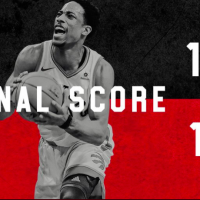The Super Bowl isn’t a holiday for sports fans alone. It’s also a holiday for marketers. One where we get to see how brands – in and out of sports – flex their muscles. From big flashy campaigns to brands trying to hijack the conversation, there is always a lot going on.
This year’s brand bowl had some highs and lows, and of course, insights and lessons. Below are some takeaways from the big game both in sports and even more broadly.
For teams, hype matters.
If you’ve read the blog before, you know I’m a big believer in the power of good hype videos. Emotion is one of the most powerful tools we have as marketers. It captures attention and entices people to share because they feel a personal connection to the content.
Throughout the entire playoffs, the Eagles did an incredible job playing into the underdog theme . They leveraged the heightened emotional moment for fans and made the most of it. By delivering content they cared about, they connected with and rallied their fans.
Takeaway: The hype is real and it matters even more when you’re on the big stage.
Emotion is multifaceted.
While I tend to gravitate to the drama of hype videos, it’s important to remember that emotion can be delivered in many different ways. Humor, awe and shock – along with anticipation – can get people to share and pay attention. A great example of the power of humor (and maybe shock) was the NFL’s spot featuring Eli Manning and Odell Beckham.
https://www.instagram.com/p/BezGP7mHV8y/?taken-by=nygiants
Another example of how multifaceted emotion can be is this piece below form the Patriots. It’s a simple but clever creative execution. And, more importantly, how it taps into nostalgia.
A childhood dream becomes a reality: pic.twitter.com/D6NaxDKsv4
— New England Patriots (@Patriots) February 4, 2018
Takeaway: While dramatic hype videos are all the rage, don’t forget that there’s power in an array of emotions.
Be more human.
One of my favorite philosophies is to “think like a brand, execute like a human”. At a strategic level, we have to focus on what moves the needle for the brand and our objectives. We have to do what’s right for the brand. Protect it, really.
At a tactical level though, we have to figure out how we can execute in a way that feels natural to consumers (while still staying true to our core). The “execute like a fan” part means brands and teams are conversational and transparent, tap into native content and think consumer first.
During the 2018 Super Bowl, the Eagles gave a example of what this means. They signed off their account for the night at a certain point to celebrate and they let fans know. They were human through transparency. Even better though, this was a strategic play. According to their digital team, they made the decision to sign off to give their staff a deserved break. They also knew good content would be buried that night if they kept sharing.
The #Eagles social media team is out celebrating a great season on the field and on the internet.
We'll see you tomorrow, but in the meantime, #FlyEaglesFly. pic.twitter.com/lGRz8h4Zec
— Philadelphia Eagles (@Eagles) February 5, 2018
This showed a human side to their account, but it was also a strategic distribution play. THAT is what it means to “think like a brand, execute like a human.” And, judging by the engagement and response, fans appreciated it.
Takeaway: People don’t want to interact with brands that act like robots. If you want to build a true connection, the key is to execute like a human.
Brands, stop talking to yourself.
Ever since Oreo dunked in the dark, brands have put enormous internal pressure on themselves. Pressure to be on all the time and everywhere consumers are. Brands force themselves into conversations. They try phony gimmicks. They’re willing to discount their brand voice, visual identity and even sometimes alienate their core audience all for short lived (and not guaranteed) retweets. Too many brand are doing just for the sake of doing.
This year’s Super Bowl was no exception. Brands tweeted just to tweet. They tweeted at each other. So much of the content was stale, expected and didn’t add value. Truly, there was a lot of clutter.
THIS IS IT – this is what we have all been training for! #BiggestFlush
— Charmin (@Charmin) February 4, 2018
Could she please compute how many stacks of 3 there are with 24 flavors https://t.co/WSut9bWQ3L
— Pringles (@Pringles) February 5, 2018
Hmmmm we feel compelled to tell @Doritos fans about our UltraGentle TP https://t.co/cd2tTPqoRJ
— Charmin (@Charmin) February 5, 2018
https://twitter.com/sprint/status/960347209949687808
As marketers, need to take a step back and have a hard conversation with ourselves. Is this what success looks like – 20 retweets in hopes of going viral?
Launching a national campaign during the Super Bowl doesn’t mean the content you surround the game with has to be about the touchdowns. The campaign should be so ownable that you don’t have to force yourself into a conversation about football if it’s not relevant to the brand or campaign.
The brands that win are original, authentic and true to their core. They deliver content that is fresh, new and something only they can own. We have to get out of our way and start pushing our thinking.
Don’t engage just to engage. Don’t push just to push. Do it because it’s original. Do it because it will elevate your brand. And, because your consumers will love it. That’s what every brand marketer must strive for.
Takeaway: We need to have a hard conversation on what success looks like. We need to elevate the standards and celebrate strategic and unique thinking. This industry is running in circles talking to itself. Let’s get out of our own way and start to innovate.
We have a long way to go with digital.
Every year the Super Bowl is an epic reminder of how far we have to go with true, integrated campaigns. So many brands still drop a spot and walk away. Dropping a spot is not a campaign. It’s checking a box. Not that strategic. An old way of thinking, really.
This year was no exception. Many brands missed the mark with their rollout and content that surrounded the spots. As the examples above showed, much of the live game content was forced (with a few exceptions of course). Additionally, there was little thought given to getting consumers to actually interact and share on behalf of the brand.
Today, distribution and consumer experience is as important as the message. Digital has opened new doors, and we have to push new thinking to make the most of it. Digital gives your work legs. Slice and dice the spot to tease it. Create social-first content (that gasp, is more lo-fi). Leverage digital to create immersive and personal experiences. Think strategically about fan engagement.
Takeaway: To make a dent, brands must surround consumers with a consistent message before, during and long after the game. Take the message and make the most of it. Success today isn’t fueled by one spot. It’s fueled by a strategic, integrated plan that thinks about the consumer first.
People have leverage.
People prefer people over brands. I know, the truth hurts sometimes. But this is important to keep in mind as you think about how to distribute content and what tools to leverage. During this year’s Super Bowl, there were several moves that reinforced the idea that people are a key piece to your distribution strategy.
First, the brands that empowered their advocates and stars to share see great engagement and consumption. Why? Because they’re able to deliver their message on a channel that feels authentic. The team at Opendorse stresses this a lot: Today, athletes are the new channels.
Athlete handles are the new channels.
In 2018, the publishers and properties who empower people to push their content will outperform those who keep it all to themselves. #smsports pic.twitter.com/ANgwMfFhuR
— Blake Lawrence 🚪 (@Blake_Lawrence) February 1, 2018
Tide was a great example of this during the game, bringing out all kind of star power to join the conversation. And most of the time, this content performed better than the content coming from the brand itself.
We're the clean your clean wishes it cleaned like. Unless your clean is @Tide #TideAd #SB52 #SBLII pic.twitter.com/BWHmntvFE3
— Isaiah Mustafa (@isaiahmustafa) February 5, 2018
Is every ad a #TideAd? You tell me. #SBLII #SB52 pic.twitter.com/APioF9SYCd
— David Harbour (@DavidKHarbour) February 5, 2018
https://twitter.com/BettyMWhite/status/960304825501065216
Second, don’t forget about consumers. Gatorade ramped up their GIPHY channel for the Super Bowl and it was full of engaging content that consumers want to share. GIFS are so embedded to the platforms we use today, so it’s not about a GIPHY channel, it’s about people sharing on behalf of the brand. This is a smart, smart play for organic and authentic word of mouth.
We’re not just fueling the athletes in the #SuperBowl, we’ve got the entire Internet covered too. Check out our library of @Gatorade fueled GIFs at https://t.co/dQVGWyfZlm #GIForade pic.twitter.com/T3YDhcxEcv
— Gatorade (@Gatorade) February 5, 2018
Takeaway: Don’t hold your content too close. Let your biggest advocates – the ones that are authentic to your brand – share on your behalf. People connect with people. Remember that.
The examples and lessons above scratch the surface of takeaways from this year’s Super Bowl. What stood out to you from both brands, teams and beyond? Share your thoughts below.





